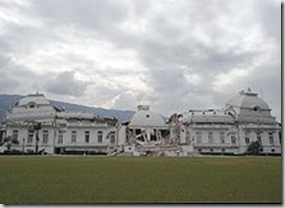We must been hearing all about these Fuel Cells since 2003, President Bush announced a program called the Hydrogen Fuel Initiative (HFI) aims to develop hydrogen, fuel cell and infrastructure technologies to make fuel-cell vehicles practical and cost-effective by 2020.
A Fuel Cells is Energy Conversion device from Chemicals like Hydrogen and Oxygen in to Water.
![[Fuel Cell Diagram Thumbnail]](http://www.grc.nasa.gov/WWW/Electrochemistry/images/fuel_cellsm.jpg) (Courtesy NASA Glenn Research Center)
(Courtesy NASA Glenn Research Center)
A simplified description of a H2-02 Proton Exchange Membrane (PEM) Fuel cell will illustrate, in general, how a fuel cell works. The fuel cell consists of a negative electrode (the anode), a positive electrode (the cathode), and an electrolyte. Fuel gas (in this case pure hydrogen) is transported through the anode towards the anode-electrolyte interface where the following (simplified) oxidation reaction occurs:
H2(g) = 2H+ + 2e-
The liberated electrons migrate out of the anode and through the external circuit where work is performed, then finally, into the cathode. On the other hand, the positive hydrogen ions (H+) migrate across the electrolyte, towards the cathode, where they ultimately react with oxygen gas and electrons to form water according to:
2H+ + 1/2 02 (g) + 2e- = H20
The overall fuel cell reaction then is simply:
H2 + 1/2 02 = H20
Seems very casual Chemical equations, right?? There is a good gif on how fuel cells work here in figure 2, Check it out.
So,What about Efficiency??lets take a look!
If the fuel cell is powered with pure hydrogen, it has the potential to be up to 80-percent efficient. That is, it converts 80 percent of the energy content of the hydrogen into electrical energy. However, we still need to convert the electrical energy into mechanical work. This is accomplished by the electric motor and inverter. A reasonable number for the efficiency of the motor/inverter is about 80 percent. So we have 80-percent efficiency in generating electricity, and 80-percent efficiency converting it to mechanical power. That gives an overall efficiency of about 64 percent. Honda's FCX concept vehicle reportedly has 60-percent energy efficiency.If the fuel source isn't pure hydrogen, then the vehicle will also need a reformer. A reformer turns hydrocarbon or alcohol fuels into hydrogen. They generate heat and produce other gases besides hydrogen. They use various devices to try to clean up the hydrogen, but even so, the hydrogen that comes out of them is not pure, and this lowers the efficiency of the fuel cell. Because reformers impact fuel cell efficiency.
The efficiency of a gasoline-powered car is surprisingly low. All of the heat that comes out as exhaust or goes into the radiator is wasted energy. The engine also uses a lot of energy turning the various pumps, fans and generators that keep it going. So the overall efficiency of an automotive gas engine is about 20 percent. That is, only about 20 percent of the thermal-energy content of the gasoline is converted into mechanical work.
A battery-powered electric car has a fairly high efficiency. The battery is about 90-percent efficient (most batteries generate some heat, or require heating), and the electric motor/inverter is about 80-percent efficient. This gives an overall efficiency of about 72 percent.
But that is not the whole story. The electricity used to power the car had to be generated somewhere. If it was generated at a power plant that used a combustion process (rather than nuclear, hydroelectric, solar or wind), then only about 40 percent of the fuel required by the power plant was converted into electricity. The process of charging the car requires the conversion of alternating current (AC) power to direct current (DC) power. This process has an efficiency of about 90 percent. So, if we look at the whole cycle, the efficiency of an electric car is 72 percent for the car, 40 percent for the power plant and 90 percent for charging the car. That gives an overall efficiency of 26 percent. The overall efficiency varies considerably depending on what sort of power plant is used. If the electricity for the car is generated by a hydroelectric plant for instance, then it is basically free (we didn't burn any fuel to generate it), and the efficiency of the electric car is about 65 percent.
Fuel-cell vehicles are potentially as efficient as a battery-powered car that relies on a non-fuel-burning power plant. But reaching that potential in a practical and affordable way might be difficult.


